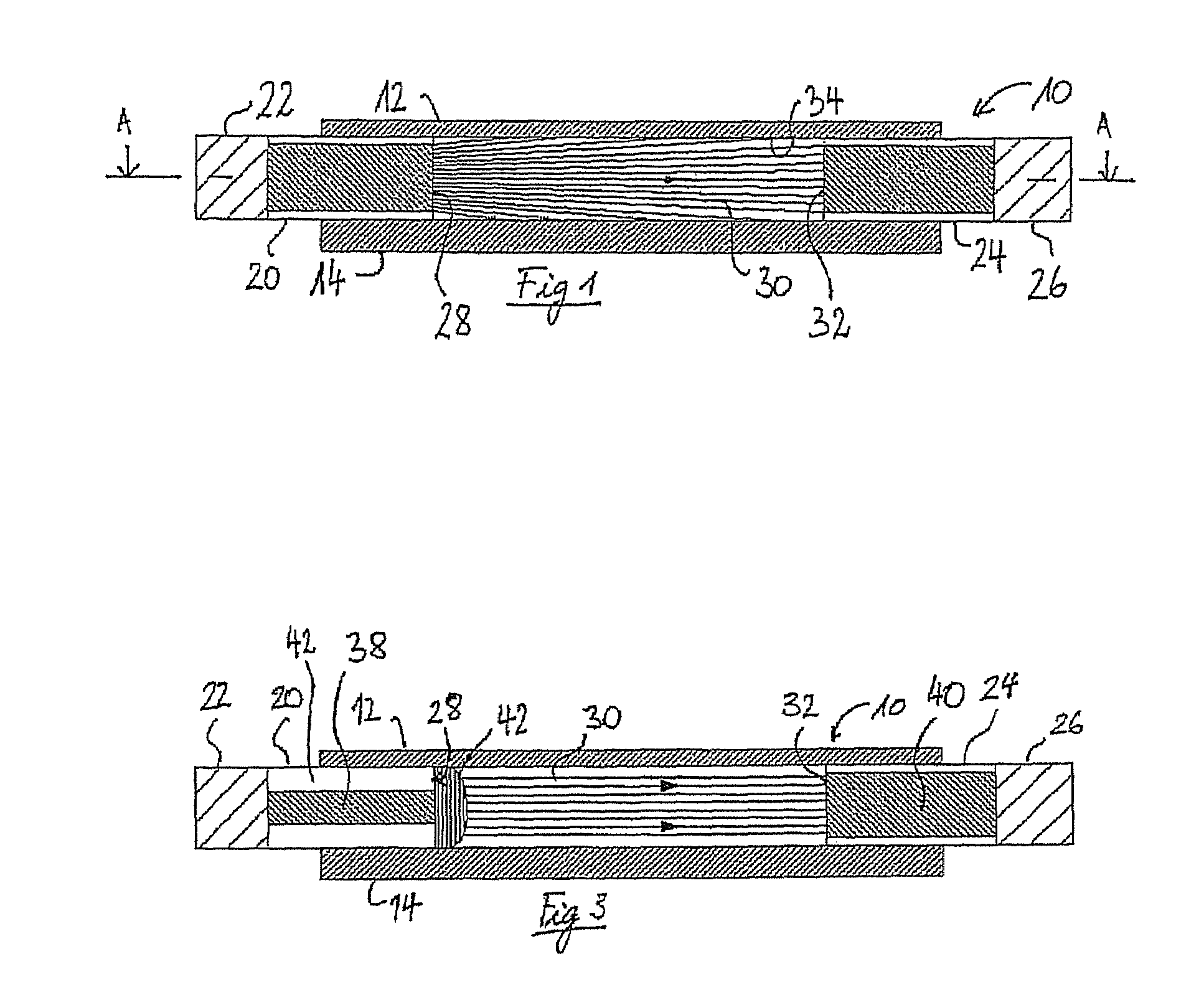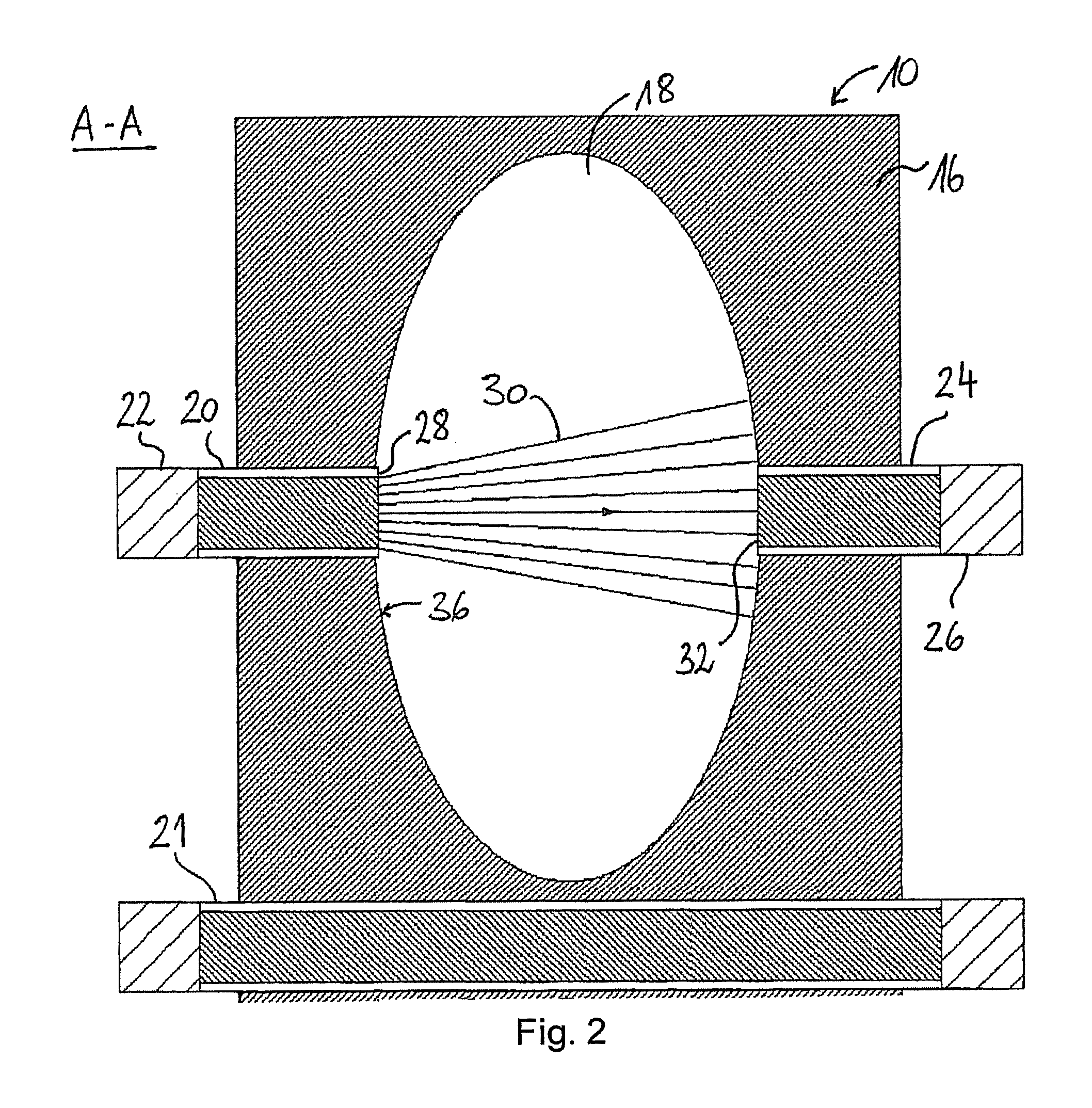Foil-type pressure sensor
a pressure sensor and oil-type technology, applied in the field of oil-type pressure sensors, can solve the problems of electromagnetic interference becoming a serious issue, the production tolerance or the dynamic range the influence of bending of the sensor is reduced, so as to achieve optimal coupling efficiency and reduce the influence of bending of the sensor
- Summary
- Abstract
- Description
- Claims
- Application Information
AI Technical Summary
Benefits of technology
Problems solved by technology
Method used
Image
Examples
Embodiment Construction
[0020]FIGS. 1 and 2 show cross-sectional views of a pressure sensor 10 in unloaded condition. The pressure sensor 10 comprises a first flexible foil 12 and a second foil 14, which is significantly less flexible than the first foil 12 and thicker. The foils 12, 14 sandwich a spacer 16, which keeps the foils 12, 14 at a certain distance from each other. The spacer 16 presents an opening, which defines a sensing region 18 of the pressure sensor 10. Embedded into the spacer 16 is an input optical waveguide 20, which guides light coming from a light source 22 into the sensing region 18. An output optical waveguide 24 is arranged substantially aligned with the input optical waveguide 20, on the opposed side of the sensing region 18. The output optical waveguide 24 is optically connected to a light intensity detector 26. The thickness of the spacer 16, i.e. the height of the sensing region corresponds to at least the diameter of the waveguides or fibres 20, 24, which typically is comprised...
PUM
 Login to View More
Login to View More Abstract
Description
Claims
Application Information
 Login to View More
Login to View More - R&D
- Intellectual Property
- Life Sciences
- Materials
- Tech Scout
- Unparalleled Data Quality
- Higher Quality Content
- 60% Fewer Hallucinations
Browse by: Latest US Patents, China's latest patents, Technical Efficacy Thesaurus, Application Domain, Technology Topic, Popular Technical Reports.
© 2025 PatSnap. All rights reserved.Legal|Privacy policy|Modern Slavery Act Transparency Statement|Sitemap|About US| Contact US: help@patsnap.com



